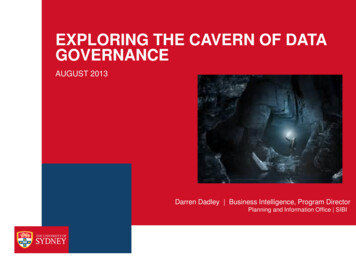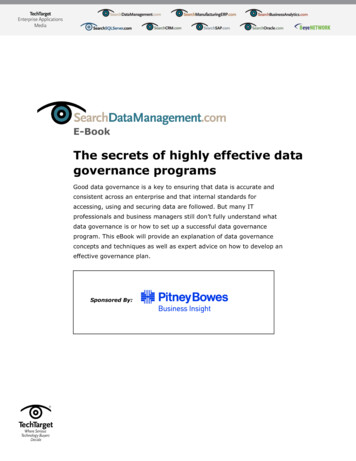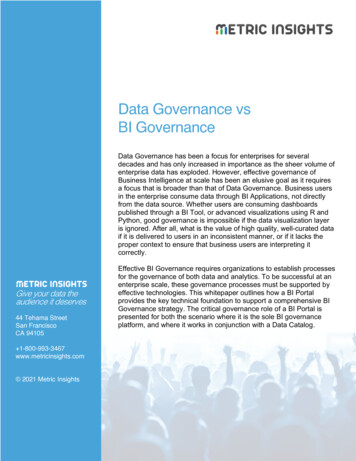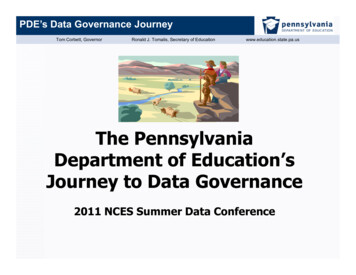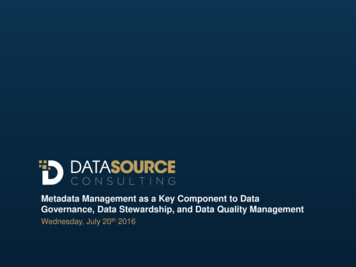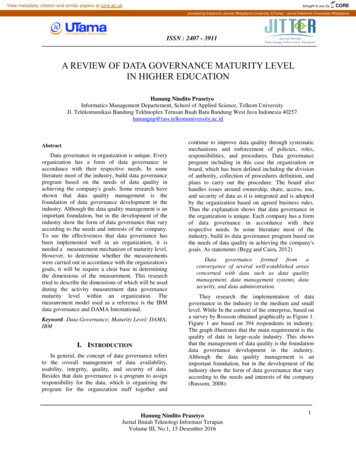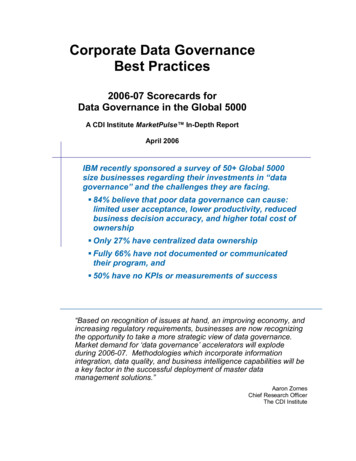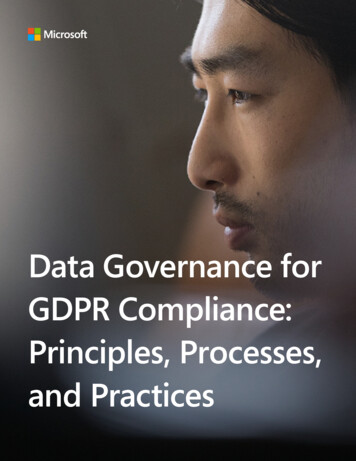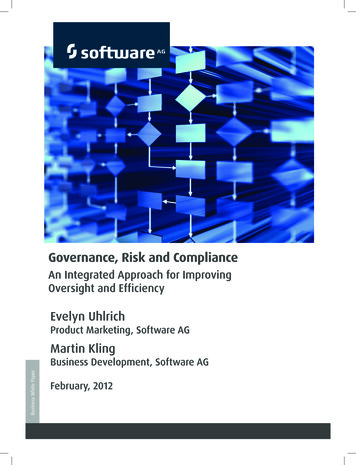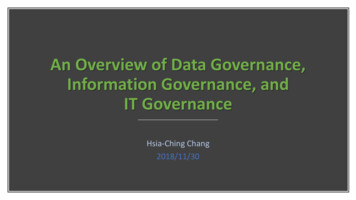
Transcription
An Overview of Data Governance,Information Governance, andIT GovernanceHsia-Ching Chang2018/11/30
Data, Information, and IT as Assets to be Governed Khatri & Brown (2010) defined information assets (or data) as “factshaving value or potential value that are documented.” (p. 148) To derive value from information, organizations need to invest intechnology and systems.Source: Adapted from Weill and Ross (2004) in Khatri, V., and Brown, C.V. (2010). Designing data governance. Communications of the ACM,53(1), 148–152.PS: Weill, P. and Ross, J. W. (2004) IT governance: How top performers manage IT decision rights for superior results. Harvard Business School Press,Boston, MA.
Source: https://trends.google.com/trends/explore?date all&geo US&q vernance
IT Governance CubeAdapted IT Governance CubeIT governance, focusing on information and IT assets,specifies the decision rights and accountabilityin the use of IT (Weill and Ross, 2004).Tiwana, A., Konsynski, B., and Venkatraman, N. (2013). Information Technologyand Organizational Governance: The IT Governance Cube, Journal ofManagement Information Systems, (30:3), pp. 7-12.Terlizzi, M. A., Meirelles, F. D. S., & Viegas Cortez da Cunha, M. A.(2017). Behavior of Brazilian Banks Employees on Facebook and theCybersecurity Governance. Journal of Applied Security Research,12(2), 224-252.
Source: https://iginitiative.com
Information Governance in PracticeSource: Bennett, S. (2017). What is information governance andhow does it differ from data governance?. Governance Directions,69(8), 462.
Source: http://www.datagovernance.com/the-dgi-framework/
The Ignored but Critical Role of InformationGovernance Aims to manage sensitive and proprietary information. A subset of IT governance and is defined as “a collection ofcapabilities or practices for the creation, capture, valuation, storage,usage, control, access, archival, and deletion of information over itslife cycle.” (Tallon et al., p. 142) While the dominant focus of IT governance literature has been on theIT artifacts, with the advent of big data analytics, the focus has beenshifted to the information artifacts.Source: Tallon, P. P., Ramirez, R. V., & Short, J. E. (2013). The information artifact in IT governance: toward a theory of information governance.Journal of Management Information Systems, 30(3), 141-178.
The Core Disciplines of Information Governance Smallwood (2014) views information governance as a “rather newmultidisciplinary field that is still being defined” (p. 6). Core disciplines of information governance (Soares, 2012; Ballard etal., 2014) These disciplines are organization (structure), metadata management,security and privacy, data quality, business process integration, master dataintegration, and information lifecycle management.Source:ü Smallwood, R.F. (2014). Information Governance: Concepts, Strategies, and Best Practices. London: Wiley.ü Soares, S. (2012) Big Data Governance: An Emerging Imperative, MC Press Online.ü Ballard, C. et al. (2014) Information Governance Principles and Practices for a Big Data Landscape. IBM Redbooks publication.
Source: Ballard, C. et al. (2014) Information Governance Principles and Practices for a Big Data Landscape. IBM Redbooks dfs/sg248165.pdf
A Framework for Big Data GovernanceSource: Soares, S. (2012) Big Data Governance: An Emerging Imperative, MC Press Online.
Data (Science) Work in ContextSource: Foster, J. (2016). Towards an understanding of data work in context:emerging issues of economy, governance, and ethics. Library Hi Tech, 34(2), 182–196.
Three Main Themes of Information Governance While there is no commonly agreed definition of informationgovernance, three themes emerge: Who is responsible, that is, who holds the decision rights and who isaccountable? How is it carried out, for instance, via policy, procedures, processes, andstandards for life cycle management of information? To what is it being directed, that is, “value” to the organization and itsstakeholders, which encompasses value in the sense of compliance and riskmanagement.Source: Foster, J., McLeod, J., Nolin, J., & Greifeneder, E. (2018). Data work in context: Value, risks, and governance.Journal of the Association for Information Science and Technology.
Management Information Systems, (30:3), pp. 7-12 . master data integration, and information lifecycle management. Source: üSmallwood, R.F. (2014). . üBallard, C. et al. (2014) Information Governance Principles and Practices for a Big Data Landscape. IBM Redbooks publication. Source: Ballard, C. et al. (2014) Information Governance .
